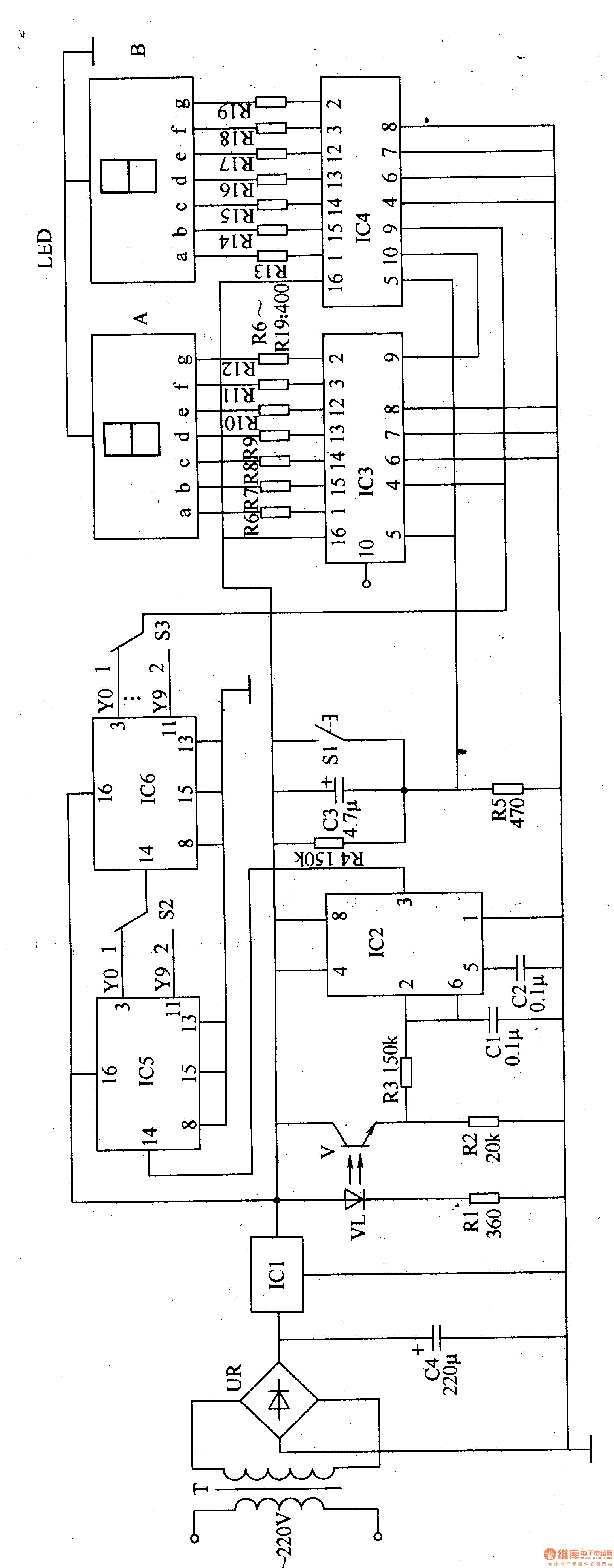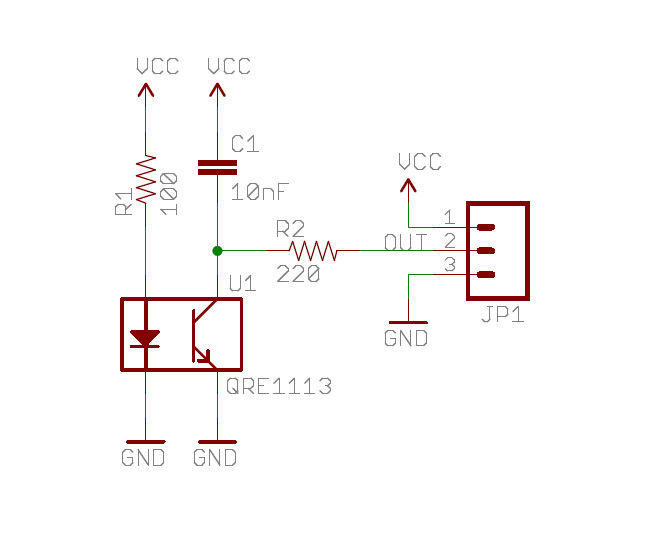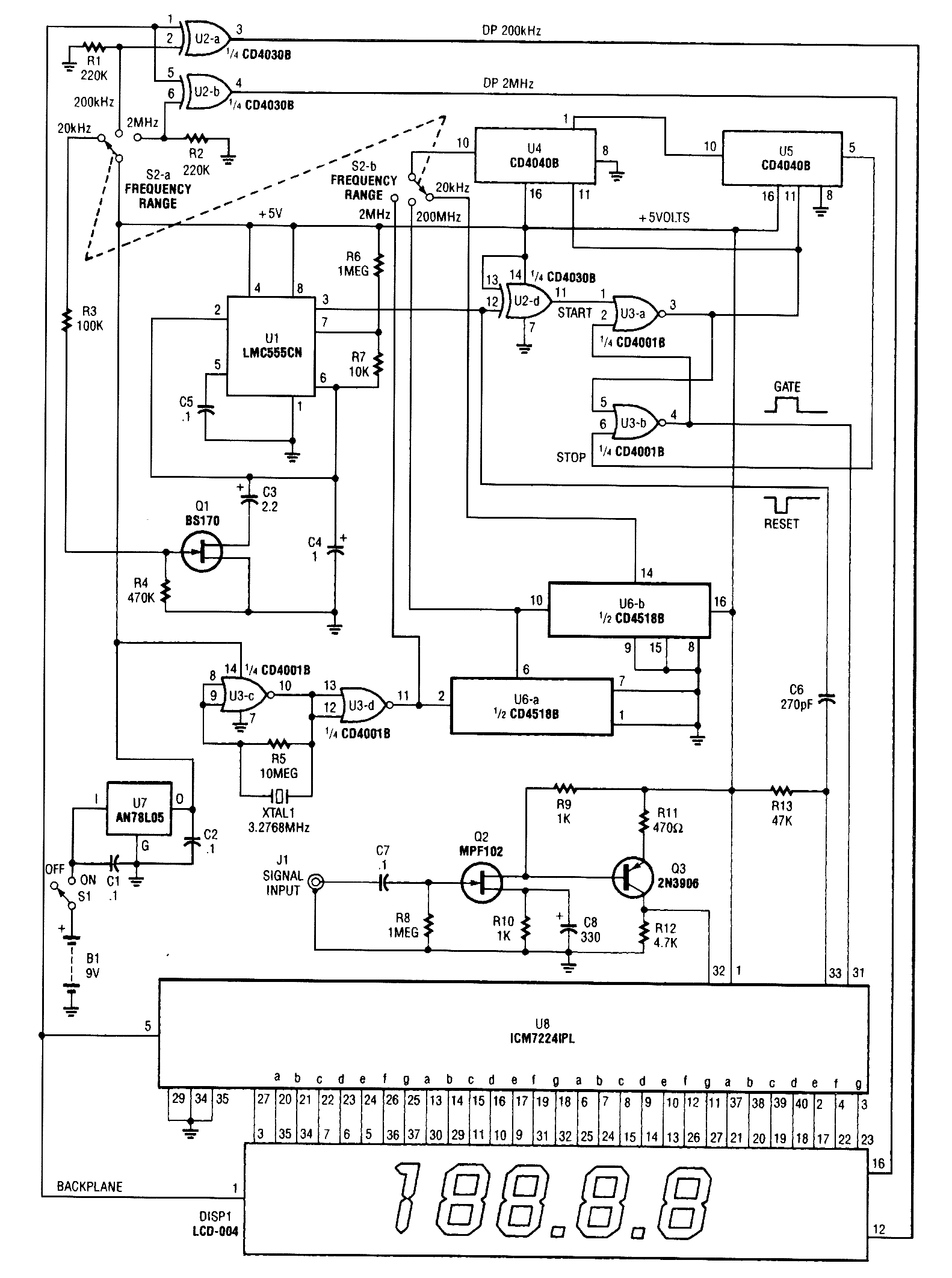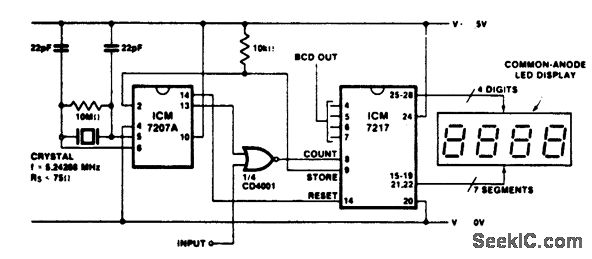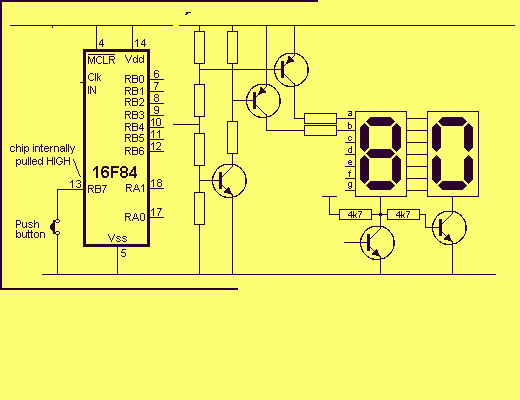
Quick Counter For Young Children
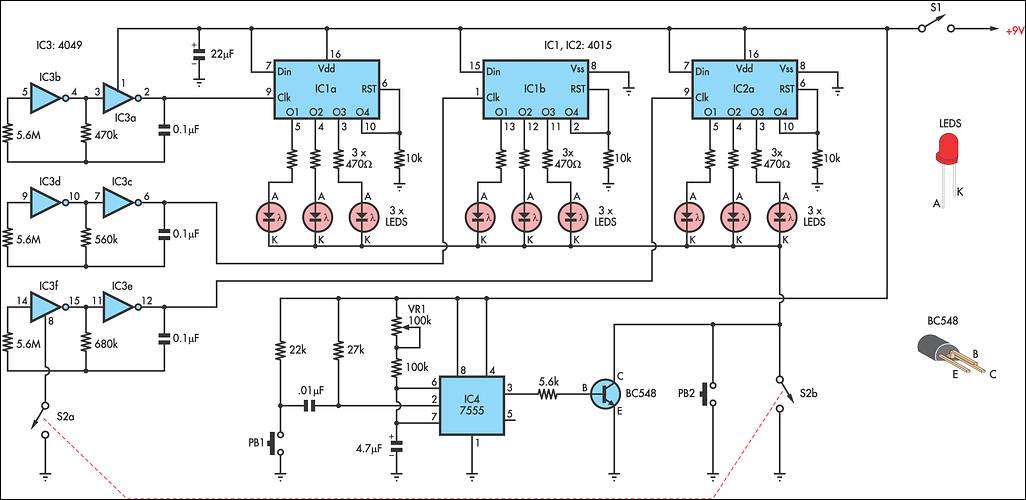
This circuit is a toy designed to help young children learn to count. Power is activated by switch S1, followed by closing switch S2, which causes nine LEDs to flash slowly. When S2 is opened, the LEDs turn off. Pressing pushbutton PB1 briefly activates a random number of LEDs, which the children are to count. The counted number can be verified by pressing PB2, which turns on the same LEDs for an adjustable duration. The circuit functions as follows: IC3 is a 4049 hex inverter configured as three oscillators operating at different frequencies, activated by closing switch S2a. The clock pulses generated by IC3 drive both halves of IC1 and one half of IC2, which are 4015 dual 4-stage shift registers. Each shift register sequentially activates its four outputs: 1, 1 and 2; 1, 2 and 3; and 1, 2, 3 and 4. However, output 4 is connected to the reset line of its own half, causing the shift register to reset to zero. Outputs 1, 2, and 3 from all three shift registers are connected to nine LEDs, with their cathodes linked to a common rail that connects to ground via S2b when switch S2 is closed. When S2 is opened, the three oscillators cease operation, but a random number of LEDs remains connected to the high outputs of the 4015s. This number can be briefly viewed by pressing PB1, which triggers the 7555 timer in monostable mode to provide a short-duration output that drives transistor Q1, connecting the LED cathodes to 0V. The viewing duration is adjustable via VR1. To verify the count, pressing PB2 keeps the same LEDs illuminated for as long as desired. The LEDs are arranged in a 3 x 3 grid with connections arranged randomly, meaning the first row does not correspond to the three LEDs from the first half of IC1. Unlike traditional dice, a number such as 5 can appear in various formats, making pattern recognition ineffective. Additionally, this circuit does not function as a true nine-output die, as the numbers do not appear with equal frequency.
The circuit employs a combination of digital logic components and timing elements to create an engaging educational tool. The 4049 hex inverter serves as the primary oscillator, providing clock signals that control the timing of the LED outputs. The 4015 shift registers are pivotal in generating the sequence of LED activations, with the reset mechanism ensuring that the counting sequence can start anew after each cycle. The inclusion of pushbuttons PB1 and PB2 allows for interactive engagement, where children can actively participate in counting and verifying their answers.
The use of a 7555 timer in monostable mode introduces a controlled pulse width, allowing for a brief illumination of the LEDs, which is crucial for maintaining the children's attention and providing a clear counting exercise. The adjustable resistor VR1 enables customization of the viewing time, accommodating different learning paces among children.
The random arrangement of LEDs in a 3 x 3 grid not only makes the game visually engaging but also enhances cognitive challenges, as children must recognize numbers without relying on spatial patterns. This feature, combined with the non-uniform frequency of number appearances, encourages children to develop their counting skills in a fun and interactive manner, reinforcing their learning through play. Overall, this circuit exemplifies a creative approach to education through electronics, combining fundamental engineering principles with child-friendly design.This circuit is a toy to encourage young children to count. Power is turned on by switch S1, then S2 is closed. This makes nine LEDs flash slowly. S2 is then opened and the LEDs go out. Pressing pushbutton PB1 turns on a random number of LEDs - briefly - during which time they are to be counted. The number counted can be checked by pressing PB2 wh ich turns the same LEDs on for as long as needed. Then repeat. The circuit works as follows: IC3 is a 4049 hex inverter connected as three oscillators running at different rates. It is turned on by closing switch S2a. The clock pulses from IC3 drive both halves of IC1 and one half of IC2, both being 4015 dual 4-stage shift registers.
Each shift register has four outputs which go high in order: 1, 1 and 2; 1 and 2 and 3; 1 and 2 and 3 and 4. However as output 4 is connected to the reset line of its own half - the shift register resets to zero.
Outputs 1, 2 & 3 of all three shift registers are connected to nine LEDs, the cathodes of which go to a common rail. This rail is connected to ground via S2b when switch S2 is closed. When S2 is opened the three oscillators stop but a random number of LEDs is still connected to the high outputs of the 4015s.
That number can be viewed briefly by pressing PB1 which pulses the 7555 timer in monostable mode, to give a short duration output which drives Q1 and connects the LED cathodes to 0V. The viewing time is adjustable by VR1. Checking a count is done by pressing PB2 which holds the same LEDs on as long as desired. The LEDs are set in a 3 x 3 grid with the connection scattered, ie, the first row is not the three LEDs from the first half of IC1.
Note that, unlike the usual dice, a number such as 5 can appear in many formats, so pattern recognition is no help. Also note that this is not a nine output true dice - because the numbers do not come up with equal frequency.
🔗 External reference
The circuit employs a combination of digital logic components and timing elements to create an engaging educational tool. The 4049 hex inverter serves as the primary oscillator, providing clock signals that control the timing of the LED outputs. The 4015 shift registers are pivotal in generating the sequence of LED activations, with the reset mechanism ensuring that the counting sequence can start anew after each cycle. The inclusion of pushbuttons PB1 and PB2 allows for interactive engagement, where children can actively participate in counting and verifying their answers.
The use of a 7555 timer in monostable mode introduces a controlled pulse width, allowing for a brief illumination of the LEDs, which is crucial for maintaining the children's attention and providing a clear counting exercise. The adjustable resistor VR1 enables customization of the viewing time, accommodating different learning paces among children.
The random arrangement of LEDs in a 3 x 3 grid not only makes the game visually engaging but also enhances cognitive challenges, as children must recognize numbers without relying on spatial patterns. This feature, combined with the non-uniform frequency of number appearances, encourages children to develop their counting skills in a fun and interactive manner, reinforcing their learning through play. Overall, this circuit exemplifies a creative approach to education through electronics, combining fundamental engineering principles with child-friendly design.This circuit is a toy to encourage young children to count. Power is turned on by switch S1, then S2 is closed. This makes nine LEDs flash slowly. S2 is then opened and the LEDs go out. Pressing pushbutton PB1 turns on a random number of LEDs - briefly - during which time they are to be counted. The number counted can be checked by pressing PB2 wh ich turns the same LEDs on for as long as needed. Then repeat. The circuit works as follows: IC3 is a 4049 hex inverter connected as three oscillators running at different rates. It is turned on by closing switch S2a. The clock pulses from IC3 drive both halves of IC1 and one half of IC2, both being 4015 dual 4-stage shift registers.
Each shift register has four outputs which go high in order: 1, 1 and 2; 1 and 2 and 3; 1 and 2 and 3 and 4. However as output 4 is connected to the reset line of its own half - the shift register resets to zero.
Outputs 1, 2 & 3 of all three shift registers are connected to nine LEDs, the cathodes of which go to a common rail. This rail is connected to ground via S2b when switch S2 is closed. When S2 is opened the three oscillators stop but a random number of LEDs is still connected to the high outputs of the 4015s.
That number can be viewed briefly by pressing PB1 which pulses the 7555 timer in monostable mode, to give a short duration output which drives Q1 and connects the LED cathodes to 0V. The viewing time is adjustable by VR1. Checking a count is done by pressing PB2 which holds the same LEDs on as long as desired. The LEDs are set in a 3 x 3 grid with the connection scattered, ie, the first row is not the three LEDs from the first half of IC1.
Note that, unlike the usual dice, a number such as 5 can appear in many formats, so pattern recognition is no help. Also note that this is not a nine output true dice - because the numbers do not come up with equal frequency.
🔗 External reference
